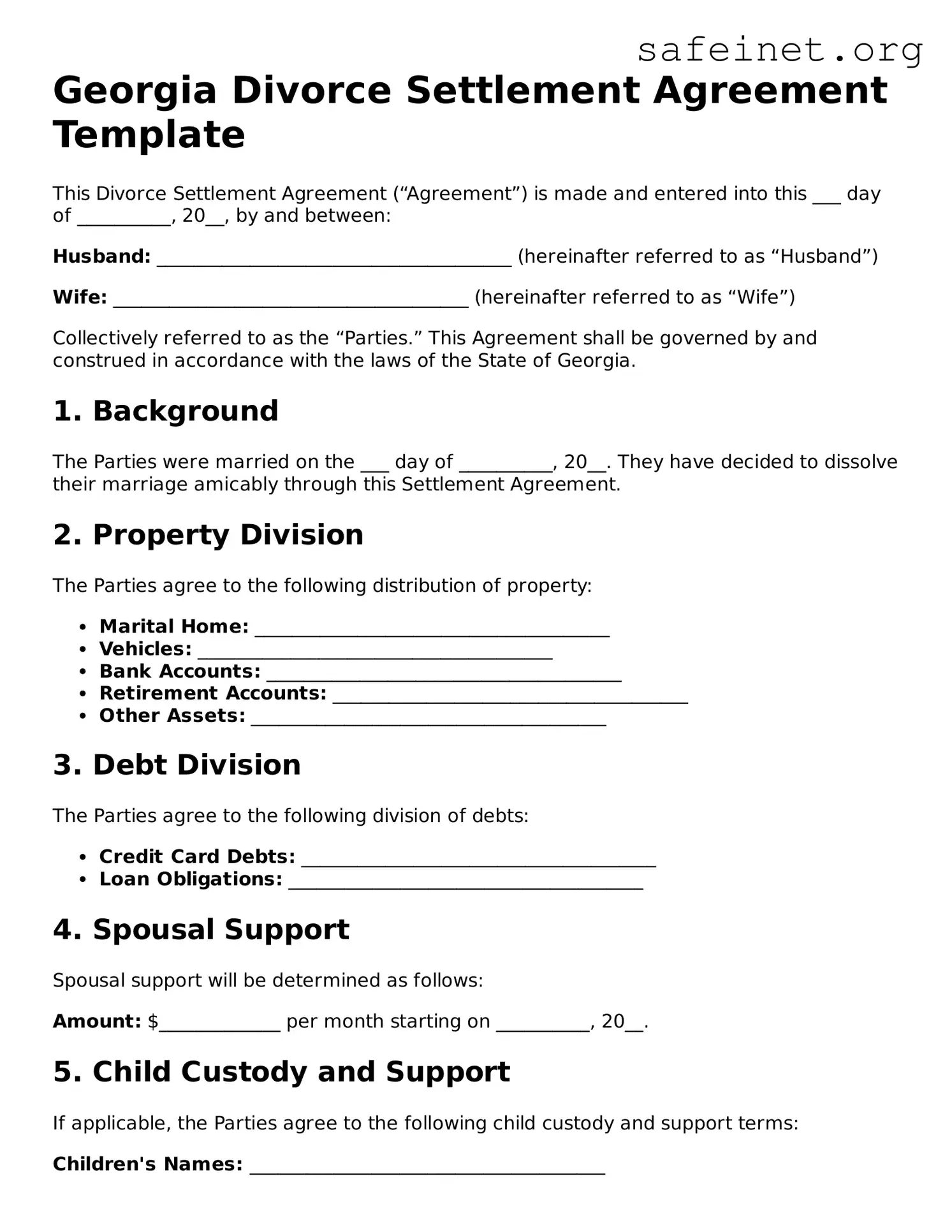Georgia Divorce Settlement Agreement Template
This Divorce Settlement Agreement (“Agreement”) is made and entered into this ___ day of __________, 20__, by and between:
Husband: ______________________________________ (hereinafter referred to as “Husband”)
Wife: ______________________________________ (hereinafter referred to as “Wife”)
Collectively referred to as the “Parties.” This Agreement shall be governed by and construed in accordance with the laws of the State of Georgia.
1. Background
The Parties were married on the ___ day of __________, 20__. They have decided to dissolve their marriage amicably through this Settlement Agreement.
2. Property Division
The Parties agree to the following distribution of property:
- Marital Home: ______________________________________
- Vehicles: ______________________________________
- Bank Accounts: ______________________________________
- Retirement Accounts: ______________________________________
- Other Assets: ______________________________________
3. Debt Division
The Parties agree to the following division of debts:
- Credit Card Debts: ______________________________________
- Loan Obligations: ______________________________________
4. Spousal Support
Spousal support will be determined as follows:
Amount: $_____________ per month starting on __________, 20__.
5. Child Custody and Support
If applicable, the Parties agree to the following child custody and support terms:
Children's Names: ______________________________________
Custodial Parent: ______________________________________
Child Support Amount: $_____________ per month.
6. Final Agreement
This Agreement represents the full and complete understanding between the Parties. No other agreements, whether oral or written, shall have any effect.
7. Signatures
By signing below, each Party acknowledges that they have read and understood this Agreement.
Husband's Signature: _______________________________ Date: ____________
Wife's Signature: _______________________________ Date: ____________
This Agreement will be filed with the appropriate court upon finalization of the divorce process.
